You can use this program test your project.
After you can written your InsertList function, you can compile the project using this command:
/home/cs255001/bin/as255 pj9.s InsertList.s
|
Use Egtapi to run the pj9 program.
Correct behavior of the InsertList project:
- When pj9 starts, you will
first need to
click on the
list window
in the variable display area:
- This will show the
list window that
contain the prepared list variables
elem
and head variables.
- The ordered list is
found at the head variable.
- The elem variable is used to allocate and insert new list elements
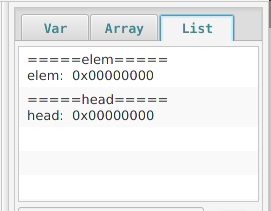
- This will show the
list window that
contain the prepared list variables
elem
and head variables.
- When you click on Run
(in Egtapi), the program will
stop at the break point
Check1
- At this moment, you should see the
listing window:
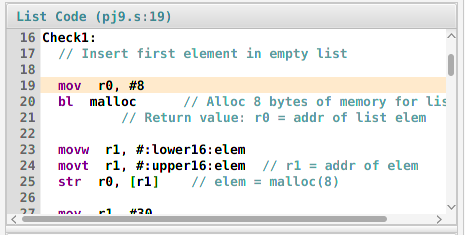
The program is ready to insert the first list element
The list display area will still show an empty list:

- At this moment, you should see the
listing window:
- When you click on Run
a 2nd time, the program will
stop at the break point
Check2:
- At this moment, you should see the list
with the element (30) at
head:
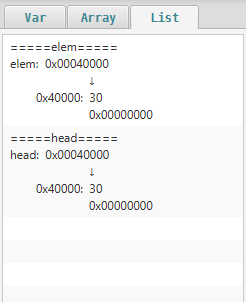
- At this moment, you should see the list
with the element (30) at
head:
- When you click on Run
a 3rd time, the program will
stop at the break point
Check3:
- At this moment, you should see the list
with the element (30, 50) at
head:
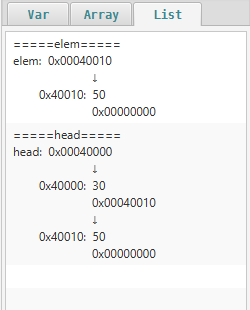
- At this moment, you should see the list
with the element (30, 50) at
head:
- When you click on Run
a 4th time, the program will
stop at the break point
Check4:
- At this moment, you should see the list
with the element (10, 30, 50) at
head:
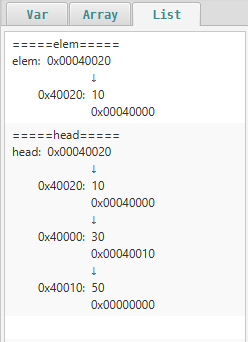
- At this moment, you should see the list
with the element (10, 30, 50) at
head:
- When you click on Run
a 5th time, the program will
stop at the break point
Check5
- At this moment, you should see the list
with the element (10, 30, 40, 50) at
head:
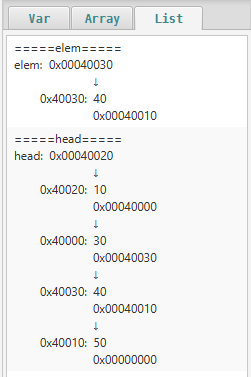
- At this moment, you should see the list
with the element (10, 30, 40, 50) at
head:
- When you click on Run
a 6th time, the program will
stop at the break point
Stop
and you see the final list:
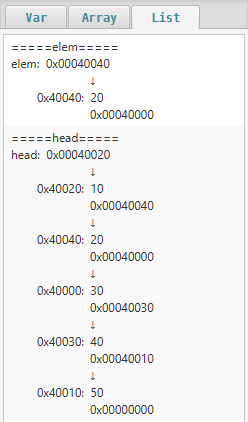
You may have to scroll the list display window a little down to see the list
|
|